This kefir honey mustard dressing is creamy, tangy and boosted with both naturally occurring probiotics and a probiotic powder supplement to up your healthy salad game!
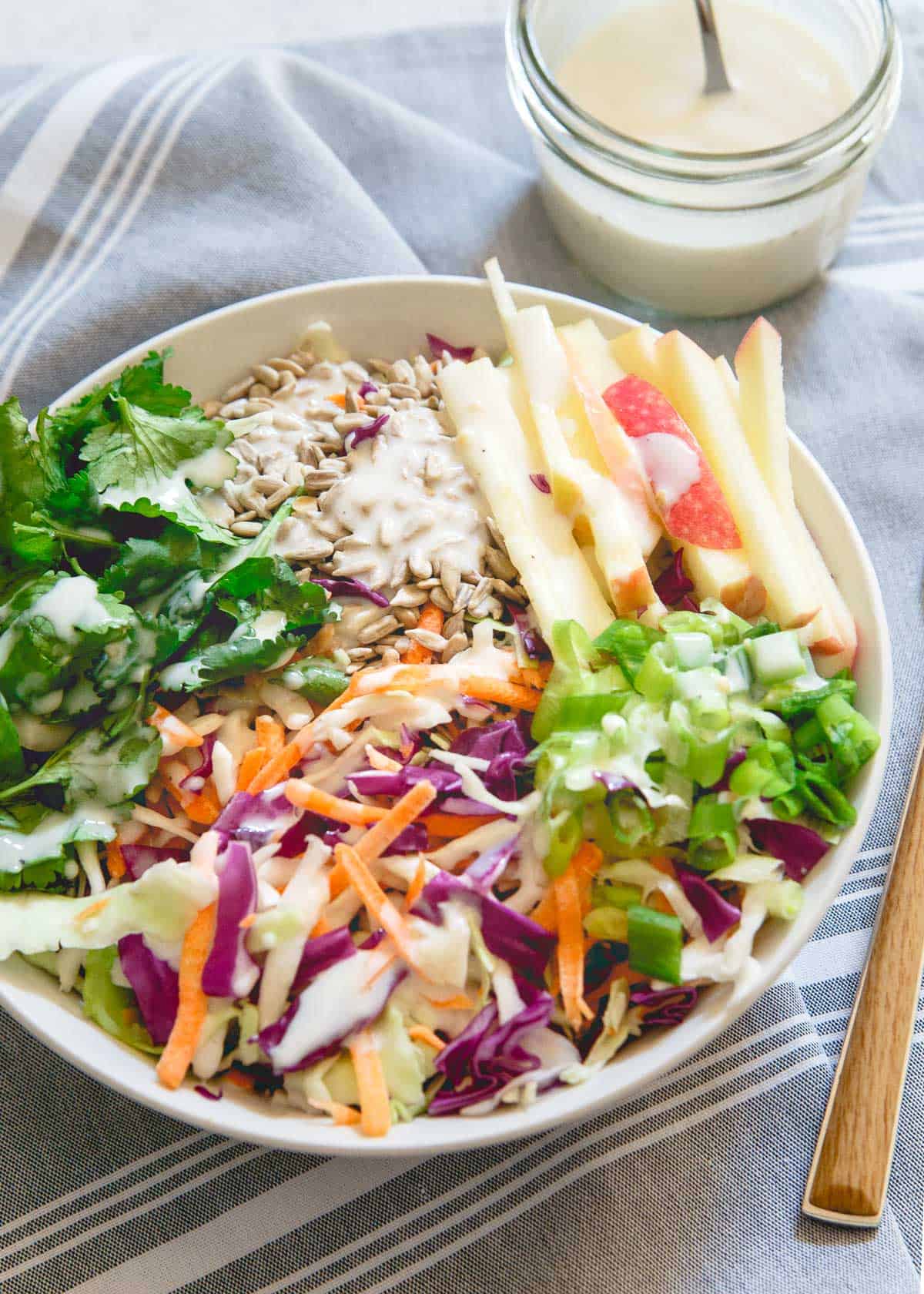
Over the past couple of weeks we’ve discussed both what to eat around training and tips for hydration, focusing more specifically on how both of these things affect athletes of all types.
While regular exercise supports digestive health in certain ways, this week, we’re diving into immunity and gut-health in particular, and going a bit deeper than just exercise.
Our digestive system does a lot for us every day, yet many of us ignore it until problems arise.
It breaks down all the foods we eat in order to make nutrients and energy available for our bodies, it’s responsible for getting rid of unwanted waste and it’s a key player in our immunity – something I think few people actually realize.
The cells that line our digestive tract usually don’t let many harmful bacteria and viruses through that could potentially make us sick.
Knowing that, don’t you want to do your best to keep it happy and healthy?
Good news – we’re going to talk about one of the ways to do just that: probiotics.
What Are Probiotics?
Our intestines are lined with tiny little hairs (called villi if you want to be technical).
Their purpose – to capture nutrients and send them into our bloodstream.
These villi are lined with good bacteria called probiotics.
Probiotics repel yeast, bad bacteria and fungi from getting into the bloodstream and assist in allowing the nutrients to be absorbed.
So, probiotics are something that naturally occur in our bodies.
The problem is some medicines (antibiotics) and diets high in processed foods can cause these helpful bacteria to die off leaving our digestive tract compromised in its efforts to keep our immunity strong.
The good news is that probiotics can be introduced to the body both through certain foods that already contain these beneficial bacteria and from supplemental products.
We’ll explore these methods a little more deeply below.
The Difference between Probiotics and Prebiotics
Before getting into how to get more probiotics into your diet, let’s cover the difference between PRObiotics and PREbiotics as you’ve probably heard of both.
We’ve already discussed how probiotics are the good bacteria that live in your gut and help your body absorb nutrients from food.
Prebiotics, however, are compounds found in many high fiber foods that help our bodies break down fiber.
They basically aid in “feeding” the good bacteria, probiotics.
Foods with a high prebiotic content are bananas, onions, garlic, asparagus, tomatoes, apples, nuts and whole-wheat foods.
For a recipe that includes both probiotics and prebiotics, check out my ultimate gut healing smoothie!
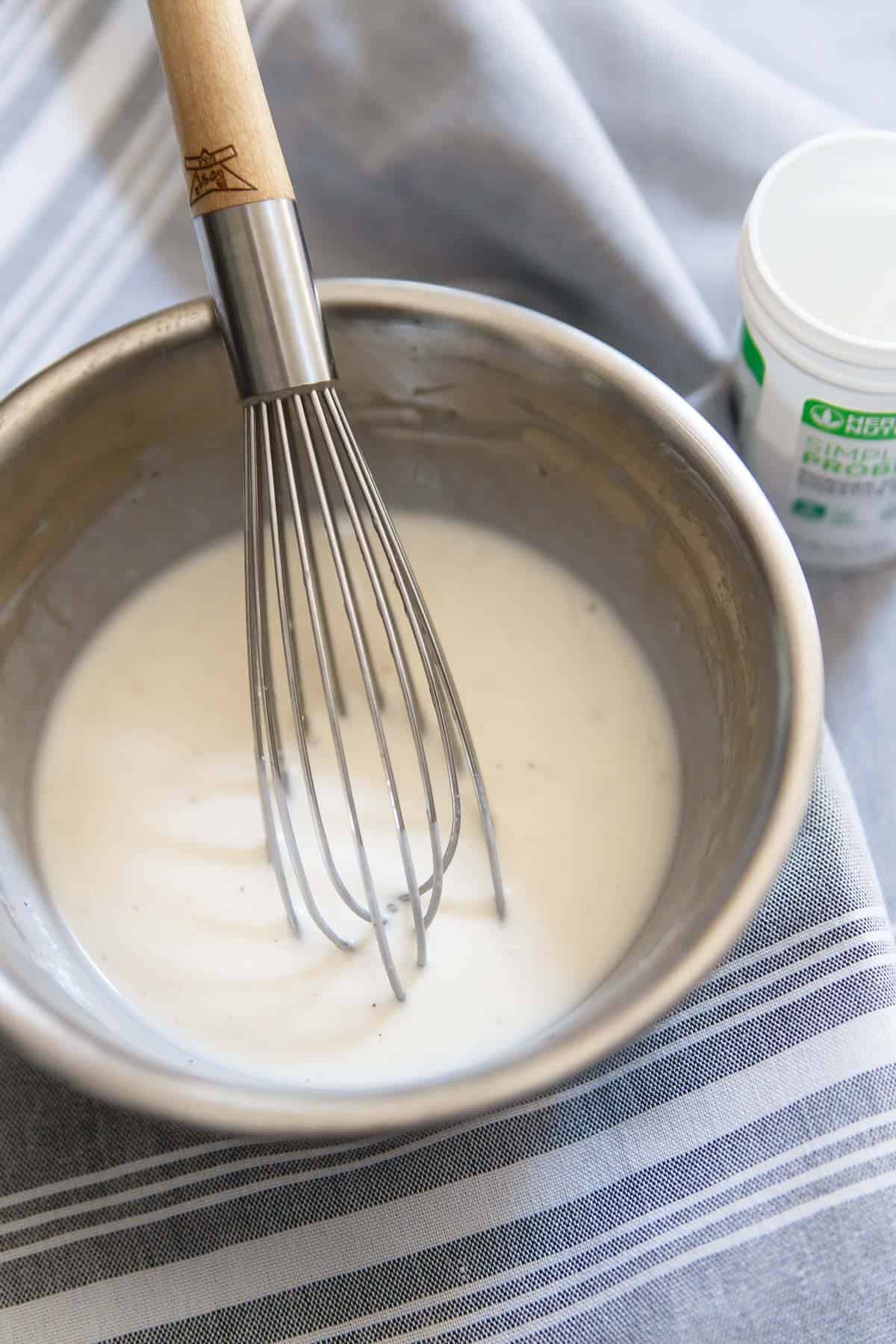
Common Probiotic Foods
I’m a big fan of getting as much as I possibly can from real food before turning to supplements.
In fact, that’s one of the main missions of this site – encouraging the consumption of real, wholesome foods for fit-minded people through recipes that celebrate their deliciousness.
I’m betting you’ve heard of yogurt when it comes to probiotic-rich foods and while that is an excellent choice (look for one that says “live active cultures” on the label <– that’s the probiotics!), there are many other choices out there too.
-kefir (a fermented milk drink – look for it in the dairy/yogurt section. Kefir ice cream is a delicious treat!)
-fermented foods like pickles, red cabbage sauerkraut, kimchi, etc.
-miso (love this maple miso chicken dish!)
-tempeh (crispy baked marinated tempeh is the best way to prepare it)
-kombucha (my favorite way to pretend I’m a hipster these days)
-olives
While you can buy fermented foods in the grocery store, you can also make your own at home very easily.
Check out this post I wrote a couple years back on How to Ferment Vegetables if you want to experiment on your own.
While yogurt or kefir are daily occurrences in my diet, I also love keeping a jar of kimchi on hand to easily add to meals.
This kimchi potato hash and this bulgogi kimchi rice plate are great examples of how to get a healthy digestive boost to a normal meal.
Supplementing Probiotics from Other Sources
I personally double up on my probiotic intake both from real foods as much as I can and through a daily supplemental product.
Probiotic balance, or imbalance rather, can be one of the causes of yeast infections and UTIs and if you’ve ever experienced either – you’d likely do anything in your power to keep it from happening again.
Therefore, as a woman, I take my probiotics seriously!
As with many things, you want to do your research on a good supplemental product before purchasing.
There are lots out there when it comes to probiotics and certain strains of bacteria are believed to help target specific issues so choose the best one for you.
Supplemental probiotics can be taken in pill or powder form, I switch back and forth between the two.
One of my favorite go-to ways for incorporating the powder is stirring it into my coffee in the morning but I also like experimenting with it in other ways like with this creamy kefir salad dressing.
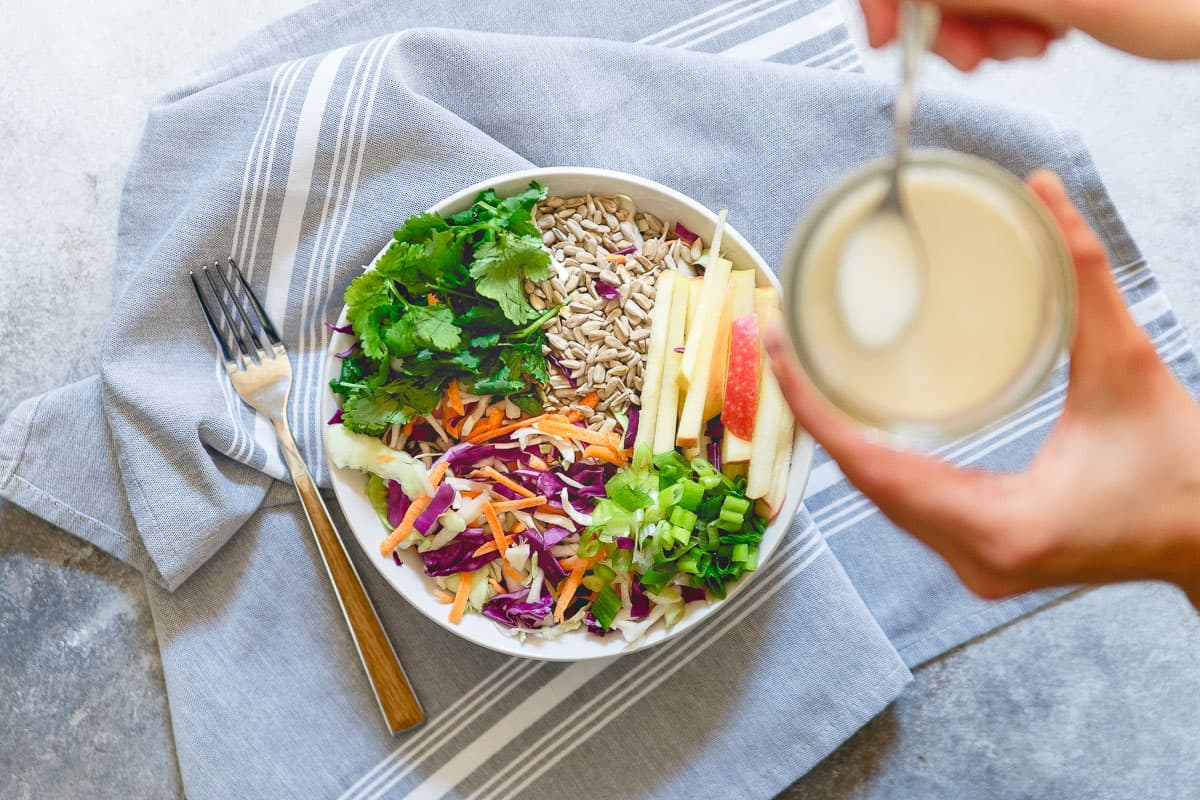
Creamy Kefir Honey Mustard Dressing
If you were munching away on a salad drizzled with this kefir dressing, you’d likely have no idea it’s anything but a yogurt version of the always delicious honey mustard option.
But, this kefir honey mustard dressing is packed with a double punch of gut-healthy probiotics both from the kefir itself and the probiotic powder whisked in.
It takes just a minute to make and is such a great healthy, flavor-packed, homemade dressing option it will really make you think twice about grabbing a bottle from the store next time.
Love this creamy kefir salad dressing recipe?
Try other homemade dressings: Creamy 3 herb dressing and Garlic Herb Tahini Dressing.
Creamy Kefir Honey Mustard Dressing
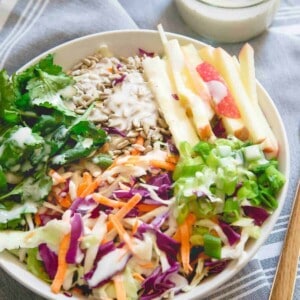
Ingredients
- 1/2 cup plain kefir
- 2 tablespoons honey mustard
- 1 scoop powdered probiotic, optional
- 1 tablespoon water
- 1/2 teaspoon apple cider vinegar
- 1/4 teaspoon minced garlic
- 1/8 teaspoon kosher salt
- 1/8 teaspoon black pepper
Instructions
- Combine all ingredients in a small bowl and whisk until smooth.
- Keep refrigerated in an air-tight container.
Nutrition
Nutrition information is automatically calculated, so should only be used as an approximation.
Gina Matsoukas is an AP syndicated writer. She is the founder, photographer and recipe developer of Running to the Kitchen — a food website focused on providing healthy, wholesome recipes using fresh and seasonal ingredients. Her work has been featured in numerous media outlets both digital and print, including MSN, Huffington post, Buzzfeed, Women’s Health and Food Network.
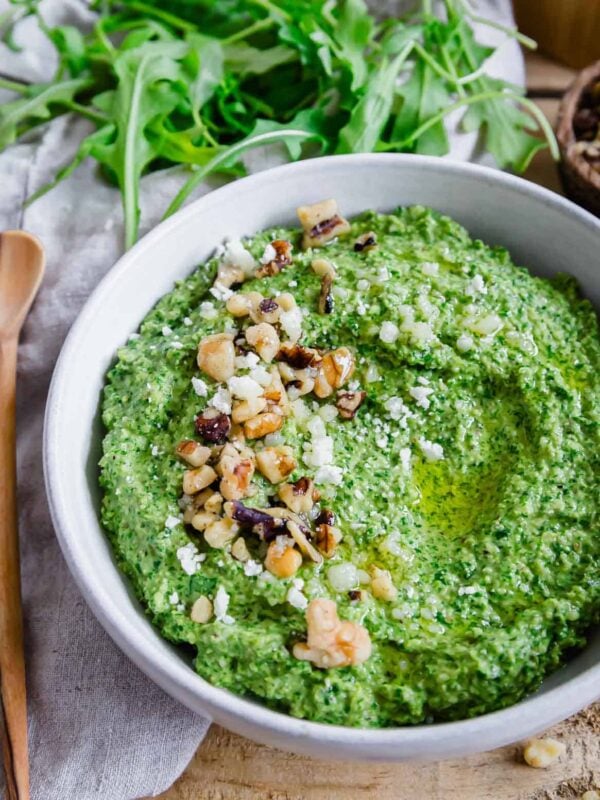
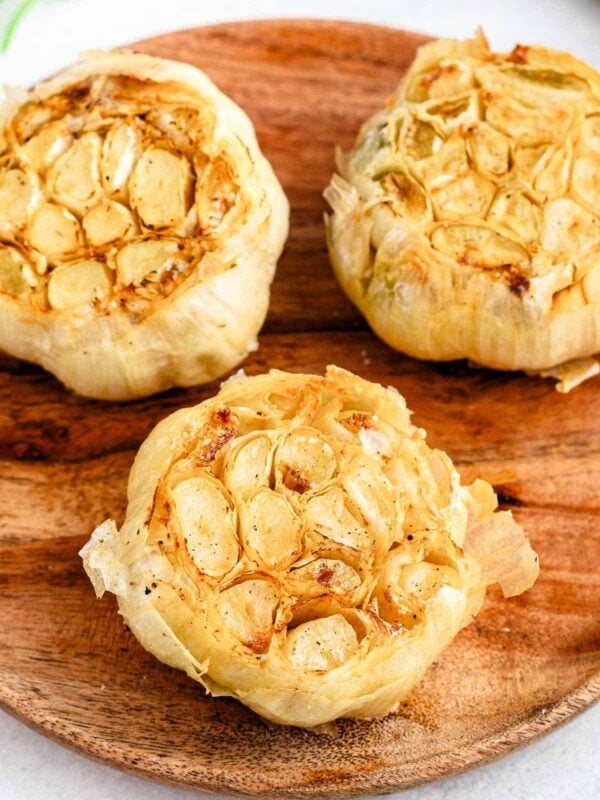
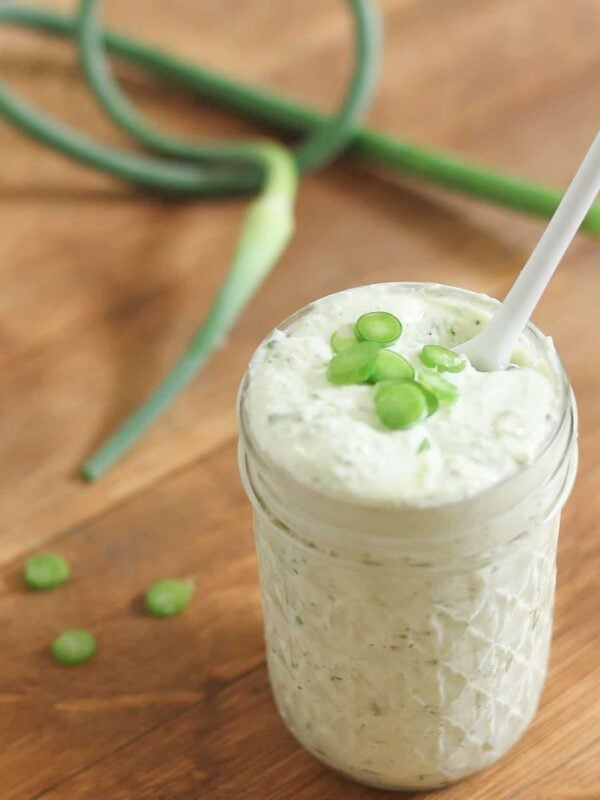
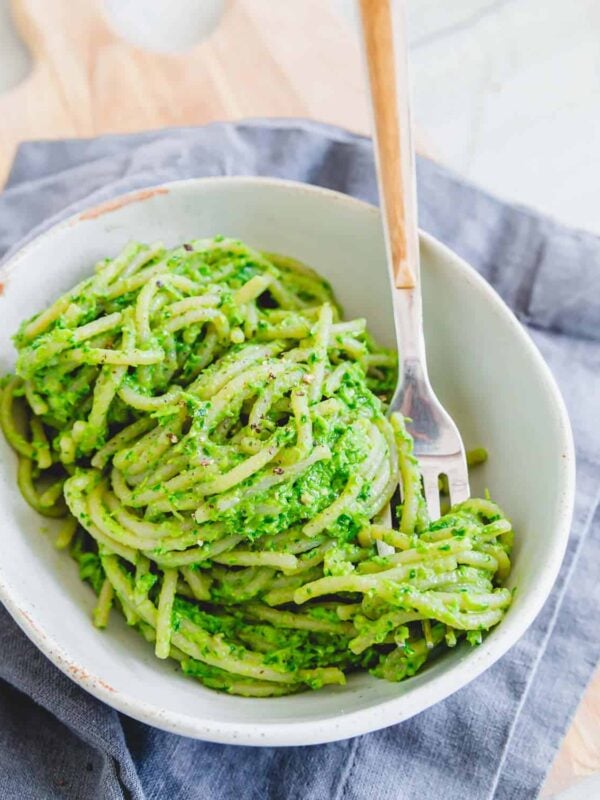





Hello, I stumbled across your website and like what I see so I subscribed. I use kefir in smoothies. but need more ideas on recipes to use it in. I don’t have honey mustard. but I do have honey & mustard. so how much of each would I need in this recipe? I don’t want to waste anything on a mistake.
I’d do equal amounts of honey and mustard then adjust for taste.
Great to try
I need to do better about including foods with probiotics in my diet. Thanks for the tips!
I’m always looking for ways to get in some extra probiotics!
What a delicious dressing idea. I really need to add more prebiotics to my diet – I have focused on pro, but didn’t realize how important they both are!
This is such a clever way to add probiotics to your diet without having to really think about it! I think the challenge for me when I first started was always forgetting to take my supplement — this is perfect for someone like me!